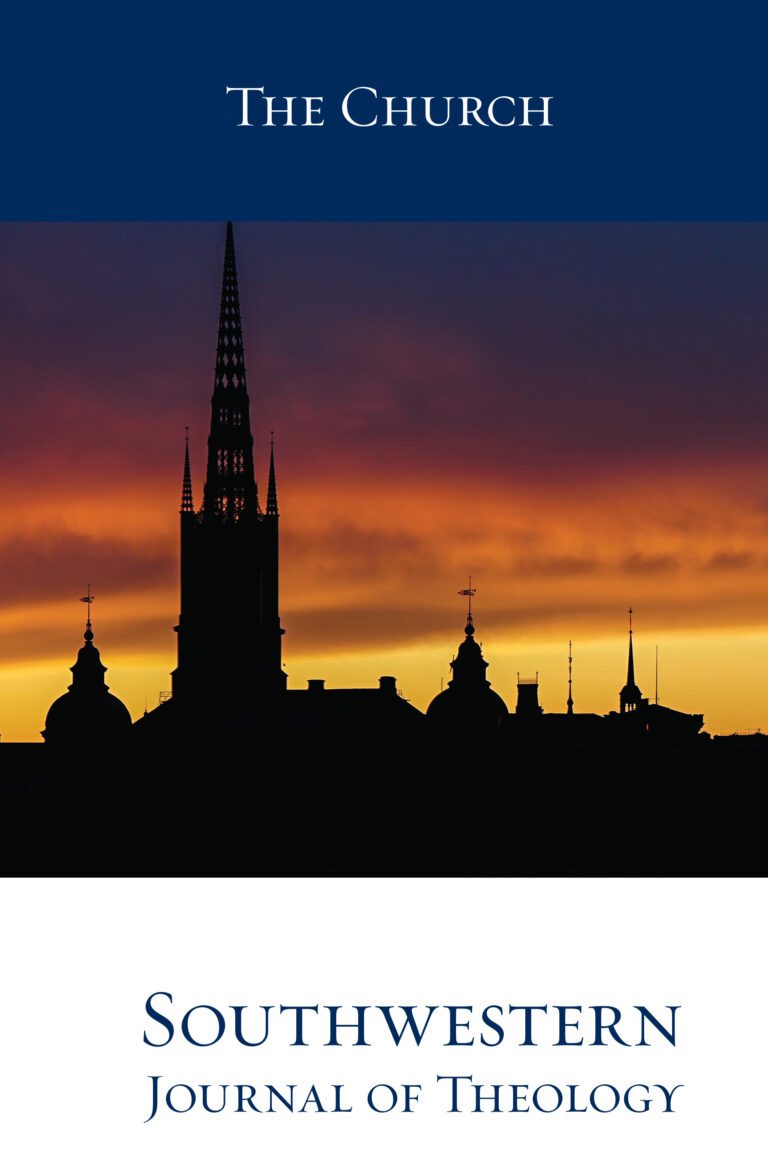
The Church
Southwestern Journal of Theology
Volume 61, No. 1 – Fall 2018
Editor: W. Madison Grace II
3rd edition. Edited by Daniel J. Treier and Walter A. Elwell. Grand Rapids: Baker Academic, 2017. 972 pages. Hardcover, $59.99.
Since 1984, the Evangelical Dictionary of Theology has been an indispensable resource for students of theology. Both the first and second edition (2001) were edited by Walter Elwell, but with his 80th birthday arriving in 2017, Elwell turned the responsibility for this, the third edition, over to Daniel Treier.
Of course, as a third edition and not a new book, much of the content remains the same from the previous versions. But in the preface to the third edition, editor Treier gives four of the “chief components” of this revision: (1) a reduction of overall length (from 1312 pages to 972); (2) addition of new content (150,000 words) and new contributors (younger, women, ethnic minority and Majority World perspectives); (3) updating every remaining article; and (4) updating all bibliographies. Each of these components deserves comment.
The shortened length comes from a narrower focus, on systematic theology per se, with less material on biblical or historical matters, and from a decision to omit articles on living theologians. The narrower focus is seen in the article on Pentecostalism. The new article is barely two-thirds the length of the article in the second edition, and has much less of the historical development and much more of the global expansion. Similarly, two articles on the Attributes and Doctrine of God are combined into one article on God that is less than half the length of the previous two. I am not sure how many articles there were on living theologians in the first edition, but flipping through the second edition I found articles on Millard Erickson, Gustavo Gutierrez, and Jurgen Moltmann. I am sure there were many more; all are omitted in the third edition.
A spot-check did find some of the new content mentioned by Treier. There was a completely new and much more up-to-date article on Church, Canon of Scripture, and Systematic Theology; numerous other new articles which were subsections of other articles (an article on the Trinity when it was a short subsection of the article on Doctrine of God; the same with Original Sin); new articles which were replacements or supplements to previous articles (a much more up-to-date article on Human Beings replacing Mankind; an article on Gender supplementing a much weaker article on Male and Female and replacing a dated article on Woman, Biblical Concept of ), and some articles on totally new topics (such as Creation Care).
In terms of new contributors, I did not make a thorough comparison. There was a mix of names of those whose books I have on my shelves, and others unfamiliar to me. There were 75 authors who were noted as deceased (out of a total of about 350 contributors) and at least twenty whose names were almost certainly female. The third new component, the updating of every remaining article, I will not dispute, but I will note that the revisions in many cases were very minor, especially in the cases of articles from authors now deceased. For example, an article on Adam by Leon Morris was quite dated, but had very little revision from the article in the second edition. The article of Justification was written by J.I. Packer in the second edition; it was reproduced almost verbatim in the third edition, but a new co-author, R. M. Allen, added a short paragraph relating to the New Perspective on Paul. Surprisingly, the article on Postmodernism was almost entirely the same.
In terms of the fourth new component, the updating of bibliographies, my spot-check of articles and their accompanying bibliographies was much more uniform and positive. Almost all the articles I checked had extensively updated bibliographies, remedying the chief complaint I had of the second edition. Having the bibliographies accompanying the articles was a very valuable feature of the second edition, but was weakened by bibliographies that were very often seriously dated. That is much less of an issue with this third edition.
There is another change, not mentioned by the editor, but of great value to readers. In the second edition, one could usually track down the article one wanted through cross-references (for Trinity; see God, Doctrine of; for Original Sin, see Sin). But occasionally I would struggle to find the article that addressed the topic I was studying. The improvement in the third edition is in the inclusion, at the very end, of an alphabetical index of articles. There will still be a need for cross-referencing, and editor Treier states that they have taken that task “very seriously.” But the index allows one to easily find if the specific topic desired is treated, and if not, one can usually see a related topic for which there is an article.
While no book is perfect, least of all one with hundreds of contributors and articles, the third edition of Evangelical Dictionary of Theology is a definite improvement over the second edition, which was, for all its faults, by far the best sourcebook for theology students. This third edition is even better, and should serve students of theology for the future in the same stellar way the second edition has served students in the past.





